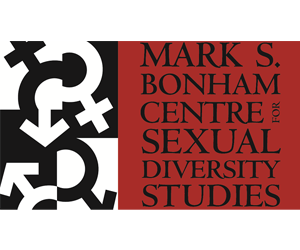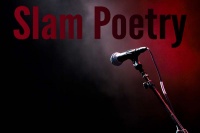Difference between revisions of "LGBTQ Spoken Word and Slam Poets"
| Line 1: | Line 1: | ||
[[File:slampoetry.jpg|200px|thumb|left]] | [[File:slampoetry.jpg|200px|thumb|left]] | ||
| + | |||
| + | Poetry has a rich history as an oral and performance tradition. Beginning in the 1990s, this traditional aspect of poetry took on new life with the birth of poetry slams, or public competitions. It is believed the first structured poetry slam took place and was started in 1986 by construction worker Marc Smith in Chicago, and the first national poetry slam in the United States occurred in 1990 in San Francisco. The movement took particular hold among young poets and those in marginalized or minority communities as a means to express opinions, convey political statements, or speak up on social issues. There is a broad range of styles and cultural traditions, but many reflect the rythmic style of the hip hop scene in music. | ||
| + | |||
| + | Today, official poetry slams are sanctioned around the world by a regulating body - Poetry Slam Inc. There is also a World Cup of Poetry Slams. | ||
| + | |||
| + | An appealing trait of a poetry slam is the injection of theatrics into the performance of original work by the poet (though props, costumes and music are prohibited). This stage performance reflects the unique personality and enthusiasm of the presenting poet or poets. These presentations are usually judged and voted on by the audience or by a panel of five judges selected from the audience. | ||
| + | |||
| + | As the popularity of this style of poetry presentation increases, so too does the profile of the poets. Today, there are several spoken word and slam poets who have received national poetry awards, and there are academic courses on the subject at higher level educational institutions. | ||
| + | |||
| + | LGBTQ participation in the art is widespread. The content often reflects the social and personal experiences of the poet, or the marginalization and challenges faced by the community in a social context. It is a further means for the community to express its opinions and voice, and offers many youths a channel to participate in activism on the various issues faced by LGBTQ individuals. | ||
| + | |||
| + | |||
| + | |||
* [[Cameron Awkward-Rich]], United States | * [[Cameron Awkward-Rich]], United States | ||
Revision as of 16:22, 29 January 2017
Poetry has a rich history as an oral and performance tradition. Beginning in the 1990s, this traditional aspect of poetry took on new life with the birth of poetry slams, or public competitions. It is believed the first structured poetry slam took place and was started in 1986 by construction worker Marc Smith in Chicago, and the first national poetry slam in the United States occurred in 1990 in San Francisco. The movement took particular hold among young poets and those in marginalized or minority communities as a means to express opinions, convey political statements, or speak up on social issues. There is a broad range of styles and cultural traditions, but many reflect the rythmic style of the hip hop scene in music.
Today, official poetry slams are sanctioned around the world by a regulating body - Poetry Slam Inc. There is also a World Cup of Poetry Slams.
An appealing trait of a poetry slam is the injection of theatrics into the performance of original work by the poet (though props, costumes and music are prohibited). This stage performance reflects the unique personality and enthusiasm of the presenting poet or poets. These presentations are usually judged and voted on by the audience or by a panel of five judges selected from the audience.
As the popularity of this style of poetry presentation increases, so too does the profile of the poets. Today, there are several spoken word and slam poets who have received national poetry awards, and there are academic courses on the subject at higher level educational institutions.
LGBTQ participation in the art is widespread. The content often reflects the social and personal experiences of the poet, or the marginalization and challenges faced by the community in a social context. It is a further means for the community to express its opinions and voice, and offers many youths a channel to participate in activism on the various issues faced by LGBTQ individuals.
- Cameron Awkward-Rich, United States
- Cheryl Burke, United States
- Staceyann Chin, Jamaica
- Tanya Davis, Canada
- Candice Iloh, United States
- Roya Marsh, United States
- Danez Smith, United States
- Michelle Tea, United States
- Storme Webber, United States
- Emanuel Xavier, United Stats
- Kit Yan, United States

